|
A CELEBRATION OF BLACK HISTORY
Sunday, February 3, 2013
Guest Writer for This Unit: Grant Crusor, Assistant Director of Admissions at Garrett-Evangelical Theological Seminary, Chicago, IL
The unit you are viewing, A Celebration of Black History, is a compact unit. This means that it is not a complete commentary of the Scripture(s) selected for this day on the calendar, nor does it have a full, supporting cultural resource unit and worship unit. Instead, to enliven the imagination of preachers and teachers, we have provided a sermonic outline, songs, suggested books, and suggested articles, links, and videos. For additional information see A Celebration of Black History in the archives of the Lectionary for 2010. Also, readers interested in Black History celebrations may want to view the MAAFA units for 2008, 2009, and 2010.
I. Description of the Liturgical Moment
In her contribution to The African American Lectionary’s Cultural Resources in 2010, Dr. Monica R. Miller describes the Celebration of Black Culture:
The celebration of black history is both a necessary corrective to the exclusion and misrepresentation of blacks in American history and an affirmation of black life passed on from one generation to the next. Contrary to the timeline of many 19th and early 20th century textbooks, black history is much more than a shallow overview of the conditions of slavery and the emancipation of enslaved Africans in the Americas. Yet African and African American contributions to history have often been denied, ignored, devalued, or purposefully hidden and attributed to Europeans and EuroAmericans. The need to reverse historical mis-education and set the record straight on the historical, cultural, scientific, political, and social achievements of ethnic African and African American peoples has been a main thrust behind the celebration of black history.
The passage selected from Joshua 4 not only tells of a time when God performed a miracle for the benefit of the Israelites, but it also underscores the very point Dr. Miller raised in the necessity of celebrating black heritage and culture. A central part of celebration is remembrance. As we will explore further throughout this unit, God calls us to remember and retell just as our ancestors were commanded to and retained the habit of doing so. In this remembering and retelling of our stories of God’s presence in our lives, we are strengthened as people, as African Americans, and, most importantly, as children of God within a divine narrative. With this now in mind, we offer a sermonic outline for A Celebration of Black History.
II. Celebration of Black History: Sermonic Outline
A. Sermonic Focus Text: Joshua 4:4-7 (New Revised Standard Version)
(v. 4) Then Joshua summoned the twelve men from the Israelites, whom he had appointed, one from each tribe. (v. 5) Joshua said to them, “Pass on before the ark of the Lord your God into the middle of the Jordan, and each of you take up a stone on his shoulder, one for each of the tribes of the Israelites, (v. 6) so that this may be a sign among you. When your children ask in time to come, ‘What do those stones mean to you?’ (v. 7) then you shall tell them that the waters of the Jordan were cut off in front of the ark of the covenant of the Lord. When it crossed over the Jordan, the waters of the Jordan were cut off. So these stones shall be to the Israelites a memorial forever.”
B. Possible Titles
i. Stony the Road We Trod
ii. Take Up Your Story and Walk!
iii. Our Story Stands Forever
C. Point of Exegetical Inquiry
In any text there can be several words or phrases that require significant exegetical inquiry. One such exegetical inquiry in this text is the command from God through Joshua in verse five to go into the middle of the Jordan before the ark of the covenant of God. By this point in the crossing of the Jordan, all of the Israelites, along with their possessions, had already passed through. However, though much of the miracle had already been accomplished in the eyes of the Israelites, God was not done authoring this part of their story. Instead, God commands Joshua to gather a representative from each of the twelve tribes to go back into the Jordan. And they weren’t to just go to the edge, they were to go into the middle—the deepest, most dangerous part, once more. Tending to their families and cattle, preparing for the day ahead in enemy territory—all of that would have to wait. The need for God to have these twelve go back and gather stones to memorialize their journey was not so that they could return to their tribes and boast of their personal strength and courage. Their going back into the Jordan, before the presence of God in an otherwise impossible situation, was so that others could always remember and that people to come could believe in God’s presence and power in their own story.
III. Introduction
By this point in American and African American history, we’ve come to know and expect a few things out of the month of February. Some are celebratory and others are a bit different from what Carter G. Woodson (who introduced the idea of celebrating Black history) had in mind. McDonald’s will air some commercials highlighting a few notable African Americans. Schools across the country will tell of Rev. Dr. Martin Luther King Jr.’s “dream” out of context. And now, President Barack Obama will be celebrated as a realization of that dream and undisputed zenith of African American history. A few “up from slavery” discussions may occur, but not more than anyone sees socially fit. Certainly even fewer narratives will be shared of our history prior to the trans-Atlantic slave trade. A solid 28 to 29 days of social media site link sharing to facts about our story will all be nicely tucked away come March 1.
As this month goes on, the commercials air, and awareness links are shared, “liked,” and retweeted, while high school dropout rates in African American communities remain far too high. Guns and drugs remain easier to come by than excellent education and safe neighborhoods. A lot of our young folks can tell us a great deal about T.I. & Tiny and any real housewife of any city yet very little about Sonia Sanchez or Medgar Evers. From this, it would seem there is not so much for us to celebrate regarding our African American heritage and culture.
There are many forces in addition to popular culture and mass media that have contributed to the reasons our communities are the way they are across the country. However, if our Joshua 4 passage is to be taken seriously, then we know that these influencers are only part of our story, not the whole, and certainly not the end! A key to Israelite successes and failures throughout the Old Testament was their ability to obey God’s commands. In Joshua 4, each of the 12 tribes was commanded to return to their story by sending the representatives back into the Jordan for stones. Their obedience in revisiting even a difficult part of their story enabled many others to be strengthened by God. Upon their return, they could have used the stones to tell of how imposing the waters were or their fear of being swept away at any moment. But those fears and surroundings are only contributing forces, parts of the story. The whole story we explore in this lection is of how God called the Israelites back to their story so they could be empowered by God’s presence in their past, present, and future, celebrating that empowerment along the way.
IV. Moves/Points
Move/Point One – With the blessing of a story to tell comes responsibility.
a. Just as the 12 representatives from each tribe had to carry the stones back to where they settled, we are tasked with carrying our story with us wherever we go.
b. Other generations depend on those presently living out the story to preserve it for the future.
c. We will forfeit the power our story holds if we don’t take authority in telling it ourselves.
Move/Point Two – Celebrating our story and way through requires going through.
a. God has purposed the challenges and triumphs in our individual and collective narratives for a reason and none are to be disregarded.
b. God calls us to retell of the pleasant and the unpleasant, our whole story.
c. God is as present with us in the “going through” as God is as we retell our story.
Move/Pont Three – Remembering and celebrating our story reinforces our identity as God’s own and beloved over time.
a. Our story reminds us that we have a past through which we have come and overcome.
b. Our story empowers us in the present, providing comfort that God is not finished within the narrative of our lives.
c. Recounting our story leads toward joy and hope in the future God has for us.
V. Celebration
Our history as Africans and people of African descent in the Americas has been everything but comfortable, yet there is joy and hope to be shared and celebrated. The narratives we know well of slavery and fights for freedom by Africans throughout the Americas is not all there is to say of our heritage and culture. We carry with us also narratives of advanced innovation and civilization others have only begun to recognize in recent years. Also, for every present day mass media misrepresentation of African American people and culture, there is a Rahiel Tesfamariam and Joshua Bennett seeking to authentically celebrate our heritage and culture. God has been present with us in our past filled with trial and tumult. God is present with us as we seek to preserve and retell our story today. God will be with us as we go forward to shape our story in the days ahead.
VI. Material for Use In Preaching and Teaching
From the poem “Remembering Who We Are”
by Rev. LaDonna Sanders Nkosi
…born a beloved child of God
before you even knew so
before you were even thought of
before the foundations of the world
you, a baby boy, a baby girl, just above the toddling age,
sank your bare tippy toes in deep plush red carpets,
put your bare feet on deep
red carpets and step by step passed ornate thrones and seats of gold
and crimson.
you dragged the plushness your favorite baby blanket which surrounded your diapered
nakedness and dragged down the aisle
stepping on deep red carpets and the harps played and trumpets sounded
and stopped when you stepped up one, two, three
to the Throne of Grace
and all glory shown from the seat of the throne
and you climbed up on the lap of the creator
and God whispered in your ear…
Remember?1
VII. Sounds, Sights, and Colors in This Passage
| Sounds: |
Moving, calm water; gladness and rejoicing in the voices of the Israelites;
|
| Sights: |
A smooth-rock-filled, dry riverbed; water being held back; the ark of the covenant of God in the middle of the Jordan River; at the Israelite camp, people settling down for the evening with families remaining close together; awe remaining on the faces of the people over what they’ve come through and the new land they’ve come to.
|
| Colors: |
Neutral colors of stones; various skin tones reflecting the lands from which the Israelites originated. |
VIII. Songs to Accompany This Sermon
A. Well-known Song(s)
- Why We Sing. By Kirk Franklin
- Blessed Assurance. By Fanny Crosby
- I Almost Let Go. By Kurt Carr
B. Modern Song(s) (Written between 2005–2012)
- I Am Not Alone. By Philip Feaster, Fred Hammond, and Calvin Rodgers
- The Freedom Riders Ride. By Wadada Leo Smith
- We Have Overcome. By Israel Houghton and Meleasa Houghton
C. Spiritual(s)
- New Born Again. Negro Spiritual. Arr. by Roland M. Carter
- Hold to God’s Unchanging Hand. By Jennie Wilson. Music by F. L Eiland. Arr. by Stephen Key
- I’ll Overcome Someday. By Charles A. Tindley
- World without Walls. By David A. Robb and Amanda Husberg. Music by Newlove Annan
D. Liturgical Dance Music
- The Drum (Africa to America). By James Harris, Gary Hines, and Terry Lewis
- Free at Last. By Al Green
E. Song(s) for the Period of Prayer
- Put Your Hand in the Hand. By Gene MacLellan
- His Strength Is Perfect. By Steven Curtis Chapman and Jerry Salley
F. Sermonic Selection(s)
- Young, Gifted, and Black. By Weldon Irving, Jr. and Nina Simone
- Lift Every Voice and Sing. Traditional
G. Benediction Song(s)
- Song of Strength. By Fred Hammond, JoAnn Rosario, and Tommie Walker
- Guide Me. By Tre’ Nelson
IX. Videos, Audio, and/or Interactive Media
X. Books to Assist in Preparing Sermons, Bible Studies, and/or Worship Services Related to Celebrating Black History
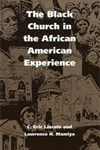 |
Lincoln, C. Eric, and Lawrence H. Mamiya. The Black Church in the African American Experience. Durham: Duke UP, 1990. |
|
|
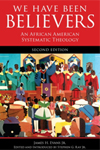 |
Evans, James H. We Have Been Believers: An African American Systematic Theology. Minneapolis: Fortress, 2012. |
|
|
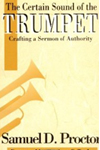 |
Proctor, Samuel D. The Certain Sound of the Trumpet: Crafting a Sermon of Authority. Valley Forge, PA: Judson, 1994. |
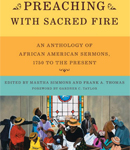 |
Simmons, Martha J., and Frank A. Thomas. Preaching with Sacred Fire: An Anthology of African American Sermons, 1750 to the Present. New York: W.W. Norton, 2010. |
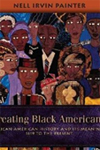 |
Painter, Nell Irvin. Creating Black Americans: African American History and Its Meanings, 1619 to the Present. New York: Oxford UP, 2006. |
|
XI. Links to Helpful Websites for Celebrating Black History
|
XII. Notes for Select Songs
A. Well-known Song(s)
- Why We Sing. By Kirk Franklin
Location:
Franklin, Kirk & The Family. Kirk Franklin and The Family. Santa Monica, CA:
Interscope, 1993.
- Blessed Assurance. By Fanny Crosby
Location:
Caesar, Shirley. Hymns. New York, NY: Word, 2001.
- I Almost Let Go. By Kurt Carr
Location:
Carr, Kurt & The Kurt Carr Singers. Setlist:The Very Best of Kurt Carr & The Kurt Carr Singers Live. Inglewood, CA: Gospocentric, 2011.
B. Modern Song(s) (Written between 2005–2012)
- I Am Not Alone. By Phillip Feaster, Fred Hammond, and Calvin Rodgers
Location:
Hammond, Fred. God, Love, and Romance. New York, NY: Sony, 2012.
- The Freedom Riders Ride. By Wadada Leo Smith
Location:
Ten Freedom Summers. Silver Spring, MD: Cuneiform Records, 2012.
- We Have Overcome. By Israel Houghton and Meleasa Houghton
Location:
Houghton, Israel & New Breed. Decade. New York, NY: Integrity, 2012.
C. Spiritual(s)
- New Born Again. Negro Spiritual. Arr. by Roland M. Carter
Location:
African American Heritage Hymnal. Chicago, IL: GIA Publications, 2001. #362
- Hold to God’s Unchanging Hand. By Jennie Wilson. Music by F. L Eiland. Arr. by Stephen Key
Location:
Zion Still Sings for Every Generation. Nashville, TN: Abingdon Press, 2007. #154
- I’ll Overcome Someday. By Charles A. Tindley
Location:
African American Heritage Hymnal. #544
- World without Walls. By David A. Robb and Amanda Husberg. Music by Newlove Annan
Location:
Zion Still Sings. #102
D. Liturgical Dance Music
- The Drum (Africa to America). By James Harris, Gary Hines, and Terry Lewis
Location:
Sounds of Blackness. Africa to America: The Journey of the Drum. New York, NY: A&M, 1994.
- Free at Last. By Al Green
Location:
Anthology. New York, NY: Capitol, 1997.
E. Song(s) for the Period of Prayer
- Put Your Hand in the Hand. By Gene MacLellan
Location:
Caesar, Shirley and James Cleveland. R.A.W Gospel Series: The King and the First Lady. Excelsior, MN: Liquid 8, 2005.
- His Strength Is Perfect. By Steven Curtis Chapman and Jerry Salley
Location:
Winans, CeCe. Alone in His Presence. Nashville, TN: Sparrow Records, 1995.
F. Sermonic Selection(s)
- Young, Gifted, and Black. By Weldon Irving, Jr. and Nina Simone
Location:
Franklin, Aretha. Young, Gifted, and Black. New York, NY: Atlantic, 1971.
- Lift Every Voice and Sing. Traditional
Location:
Charles, Ray. Ray Charles Sings for America. New York, NY: Rhino, 2002.
G. Benediction Song(s)
- Song of Strength. By Fred Hammond, JoAnn Rosario, and Tommie Walker
Location:
Hammond, Fred. Speak Those Things: POL Chapter 3. New York, NY: Verity, 2002.
- Guide Me. By Tre’ Nelson
Location:
Not Ashamed. Grand Prairie, TX: Tre’ Nelson, 2011.
Note
1. Rev. LaDonna Sanders Nkosi, “Remembering Who We Are,” Coming Back to Life. Self-Published, 2005.
|